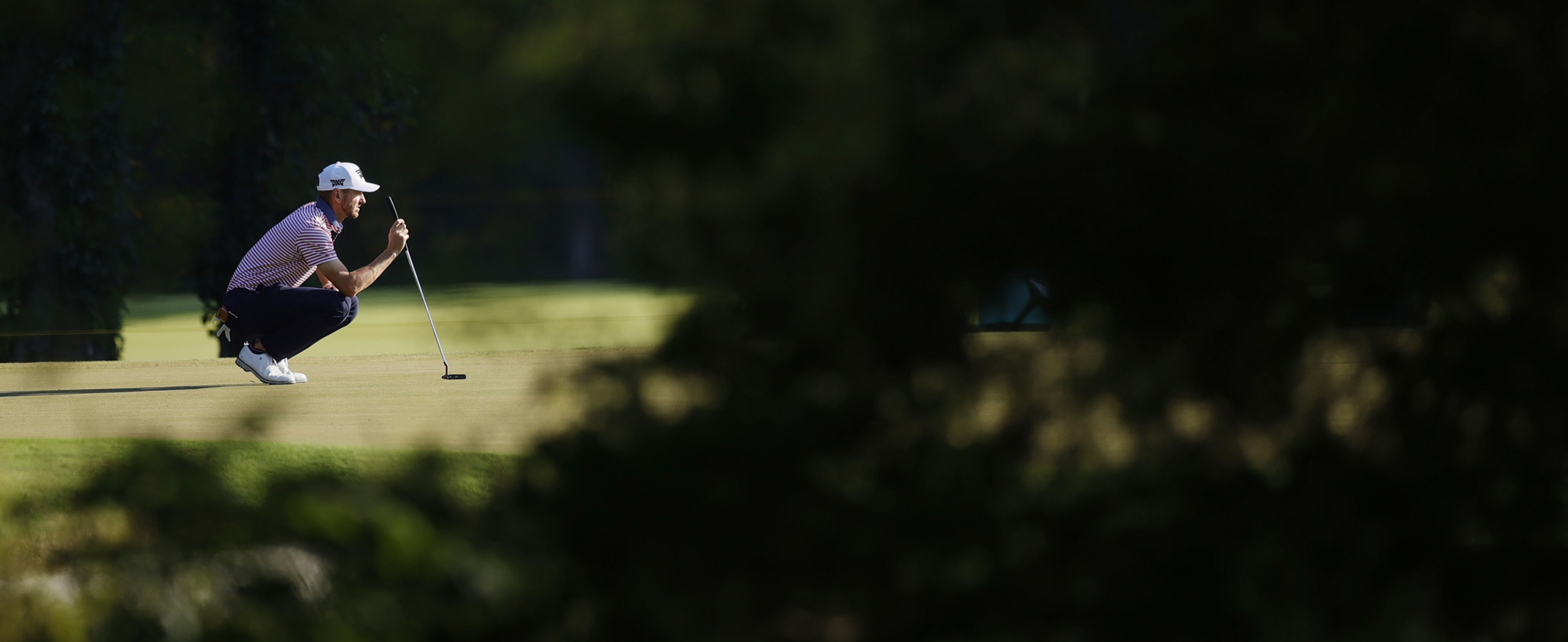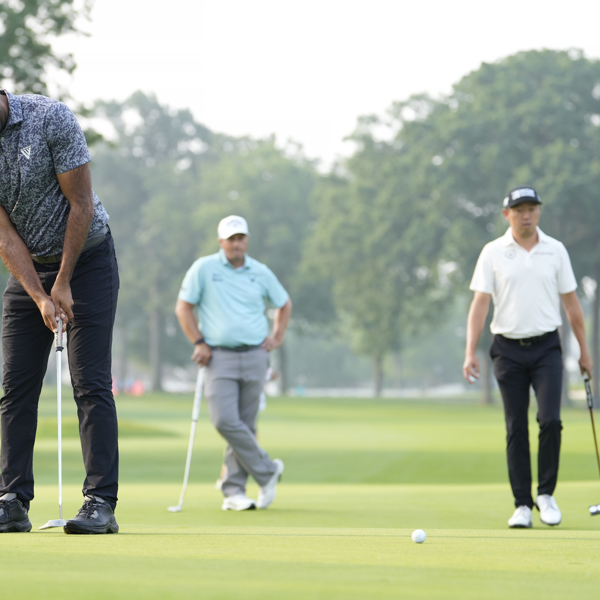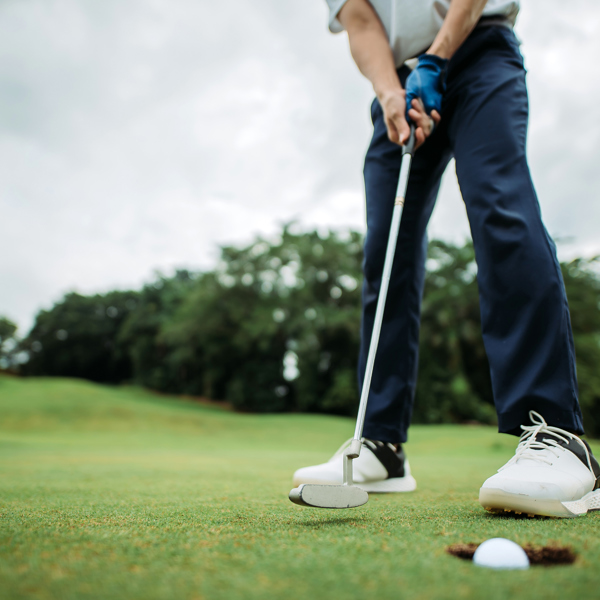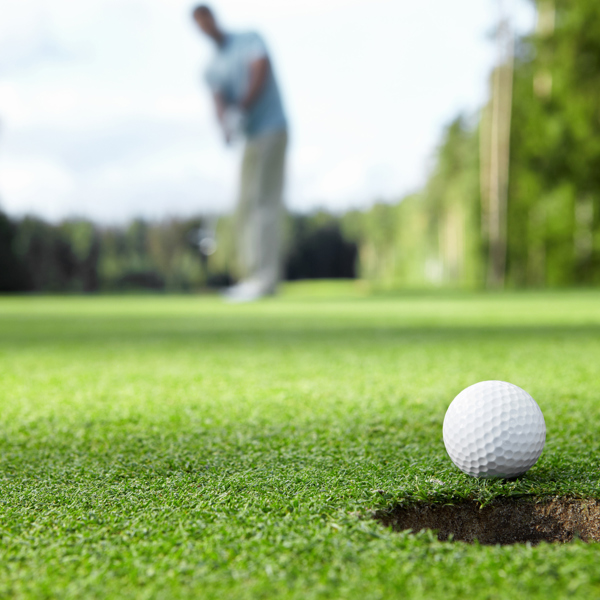Renowned putting coach and PGA Professional James Jankowski embarks on a journey to demystify the intricacies of putter selection and the quintessential aspects of refining your putting.
Selecting the perfect putter
The search for the ideal putter often seems challenging, especially for beginners. The notion that your putting stroke must harmonise with a specific putter style can often be misleading. Whilst a fitting session with a reliable coach is ideal, an effective approach can involve experimenting with various putters to gauge comfort levels in terms of alignment and stroke. If new to the game, opt for a putter with a straightforward design that resonates with your sensibilities. Additionally, as simple as it sounds, observe which putter consistently aids you in sinking more putts, as it provides invaluable insight into your preferences and effectiveness with each putter.
Mallet vs. blade putters:
Drawing a parallel between mallet and blade putters and cavity back versus bladed irons helps illuminate the distinctions. Mallet putters typically offer enhanced stability during the stroke and a degree of forgiveness, making them appealing to players struggling with off-centre strikes or inconsistent face angles. On the other hand, blade putters are synonymous with heightened feedback and stroke awareness, fostering precision and dexterity. The choice between these two putter styles is comparable to deciding between a bike with stabilisers and one without—an individual preference guided by stability and precision requirements.
Stabilisers aid in maintaining stability on the bicycle, but they prompt reflection: could one achieve greater precision without them?
The fallacy of stroke categorisation:
As alluded to earlier, one of the most pervasive myths in putter fitting is the erroneous belief that your stroke can be easily categorised to align with a specific putter profile. In simpler terms, this misconception suggests that a stroke with minimal arc and face rotation necessitates a face-balanced putter, while a stroke characterised by a more pronounced arc suits a putter with greater toe hang. This is a misconception.
Other specifics aside, a putter fitting should ultimately centre on mitigating biases. To start with, a putter fitting primarily revolves around identifying putter styles that optimise your aiming capabilities.
Elements such as neck type, offset, alignment aids, and more can significantly influence a golfer's ability to align a putter effectively.
These differences may range from subtle adjustments for some to substantial disparities for others. Subsequently, the objective is to harmonise the torque, or twist, profiles of a player with the various types of putters at their disposal. This entails testing how an individual's stroke responds when using different putter designs. For instance, if a player grapples with controlling rotation, does opting for a mallet putter with a higher MOI help improve the issue?
Conversely, could the toe hang and shallower profile of a blade putter prove advantageous in assisting them? The suitability of each putter style invariably hinges on the unique characteristics and needs of the individual golfer.
The significance of loft:
The role of loft in putting is crucial to achieving optimal ball roll. At rest, a golf ball partially nestles in the green's surface, requiring precise loft to lift it from its indentation with minimal surface interaction. The optimum launch angle on standard UK greens typically hovers around 2 degrees. Deviating from this range—either too low or too high— may lead to undesirable surface interactions that impede a smooth skid phase. The dynamic loft of the putter at impact, exerts the most influence on launch angle, necessitating the right loft configuration for the individual!
Putter length matters:
Customising putter length to align with your physique and posture is paramount. Height, posture, and your ability to maintain posture during the stroke are key considerations. An ill-fitting putter can compel compensatory movements such as reaching, less functional posture, or incorrect positioning of the arms. Striking the perfect balance in putter length is pivotal for optimal putting performance. The ideal putter length should result in our arms exhibiting a slight bend, a reasonable amount of hip flexion, decent posture, and our eyes positioned not too distant from directly over the ball
Mastering the grip:
Recognising that putting strokes differ greatly from other club swings underpins the importance of a distinctive grip. The goal is to minimise wrist motion, especially ulnar/radial wrist movement (hinging) favouring a more in-plane flow with subtle wrist flexion and extension, especially on longer putts.
Putter grip placement in the palm area facilitates a more neutral wrist position, limiting excessive wrist hinge.
The ultimate goal is to maintain a relatively flat wrist, both in terms of the forearm's relationship with the back of the hand and the forearm's alignment with the thumb. Employing a light grip pressure allows for enhanced stroke control and finesse. This aspect is critical as it allows us to perceive the nuances of acceleration and flow throughout the stroke.
Gripping too tightly often results from the need to stabilise the putter, due to poor or delayed acceleration. When the motion is fluid and synchronised, with acceleration occurring at the right moment, it becomes far easier to maintain a gentle grip. Interestingly, Tiger Woods has shared that for shorter putts, he adopts an even lighter grip. Short putts demand minimal acceleration, and he grasps the putter so lightly that it's almost as if you could pluck it from his hands.
Proper set-up:
Achieving an effective set-up starts with a neutral ball position, positioning the putter near the centre of your stance, and ensuring the ball lies slightly forward of centre. Weight distribution should be evenly distributed between left and right, with the weight primarily on the balls of your feet from heel to toe. Slightly favouring the toes minimises lower body movement. Maintaining consistent distribution throughout the stroke is crucial. An upper body slightly bent over than usual, fosters a more advantageous putting stance, with greater hip hinge facilitating stability and harnessing the torso as your power source.
Mastery of speed control:
For me, speed control takes precedence in the hierarchy of putting skills. Many golfers grapple with this aspect due to poor concept comprehension. The common pitfall is a slow backstroke and transition, leading to excessive speed generation close to impact.
Late acceleration not only jeopardises speed precision but also undermines strike and face control.
The ideal scenario involves gathering adequate speed during the backstroke and transition phases to enable a smooth "cruising" motion through impact, with deceleration during the follow-through.
Numerous drills are available to assist golfers in honing their skills in this regard, and my objective is to identify the most suitable one for each individual. One effective drill for refining tempo and speed, entails arranging three tees equidistant from each other. The central tee serves as the starting position, while the other two mark the endpoints of your stroke. The objective here is to smoothly swing the putter back and forth between the outer tees, ensuring a consistent stroke length and tempo. Implement this drill while striking a ball, aiming to maintain uniformity in both stroke length and tempo. If you execute numerous repetitions from the same spot with an identical stroke, the result should be consistent distance achieved.
Numerous drills are available to assist golfers in honing their skills in this regard, and my objective is to identify the most suitable one for each individual. One effective drill for refining tempo and speed, entails arranging three tees equidistant from each other. The central tee serves as the starting position, while the other two mark the endpoints of your stroke. The objective here is to smoothly swing the putter back and forth between the outer tees, ensuring a consistent stroke length and tempo. Implement this drill while striking a ball, aiming to maintain uniformity in both stroke length and tempo. If you execute numerous repetitions from the same spot with an identical stroke, the result should be consistent distance achieved.
Reading breaking putts:
For novice golfers seeking to enhance their green-reading skills, an effective starting point involves identifying the fall line on the green. This concept pertains to locating the spot where, relative to the hole, there exists a straight uphill putt. Once this reference point is decided, golfers gain valuable insights: putts to the right of this position will break right to left, and conversely, those to the left will break left to right. As we venture farther from this straight uphill putt, the degree of break intensifies.
Next, what influences the extent of the curve in a putt? The initial factor is the most apparent—the severity of the slope. Put simply, steeper slopes induce greater break. It is also crucial to consider the element of time. The longer a putt takes to journey to the hole, the more opportunity gravity has to exert its influence and cause break. Thus, putt length, green speed, and whether the putt is uphill or downhill all factor into the time the ball spends en route to the hole.
Here's another valuable tip for deciphering breaking putts: envision the curved trajectory and the speed of the ball as it traverses its path toward the hole.
While many beginners are taught to aim a certain number of cups outside the hole—a linear read—consider a different approach. If you were to place a golf ball in someone's hand, they would instinctively visualise the ball's curved path and execute their putt accordingly. It's common to encounter golfers who struggle with linear reading and have a limited understanding of the ball's journey to the hole. To refine your green-reading skills, try positioning a ghost hole along your intended line, approximately two-thirds of the way to the actual hole (a point where there is a noticeable tendency). This technique offers immediate feedback on the accuracy of your read and whether you've initiated your putt along the correct line. It helps you determine if your issues stem from misreading or failure to execute your read.
Improve your putting technique with a PGA Professional
The value of a putting lesson:
Similarly to their full swing counterparts, putting deserves meticulous scrutiny and instruction. Perhaps unlike their full swing, many golfers lack insights into their putting flaws and seldom engage in structured practice. A golf lesson with James involves video analysis, data collection, and extensive inquiry into a golfer's approach. James's holistic approach encompasses technique, aim, green reading, practice and psychological aspects. Addressing the specific areas where the most substantial improvements can be achieved is the core of his coaching philosophy, moving beyond the ability to merely strike a straight eight-footer.
Recording every putt:
For comprehensive tracking of putting performance, Spider Putt is a valuable app that enables you to record putts, including their break direction. Over time, it provides insights into your Strokes Gained metrics across distances and directions, highlighting strengths and weaknesses. Alternatively, UpGame and Clippd are recommended apps for comprehensive statistics encompassing all aspects of your game.
Read more Putting Tips from the PGA
About James Jankowski
James, based at Old Fold Manor Golf Club in Hertfordshire is an esteemed putting coach and fitter, earning recognition as one of Golf Monthly's Top 50 teachers. His clientele ranges from beginners to PGA and DP Tour Members. One of his career highlights includes coaching at the 150th Open Championship at St Andrews. His philosophy is simple: ‘We do whatever it takes to make each individual better on the greens'. Check out jjputting.com for more information about James’ specialist coaching.








